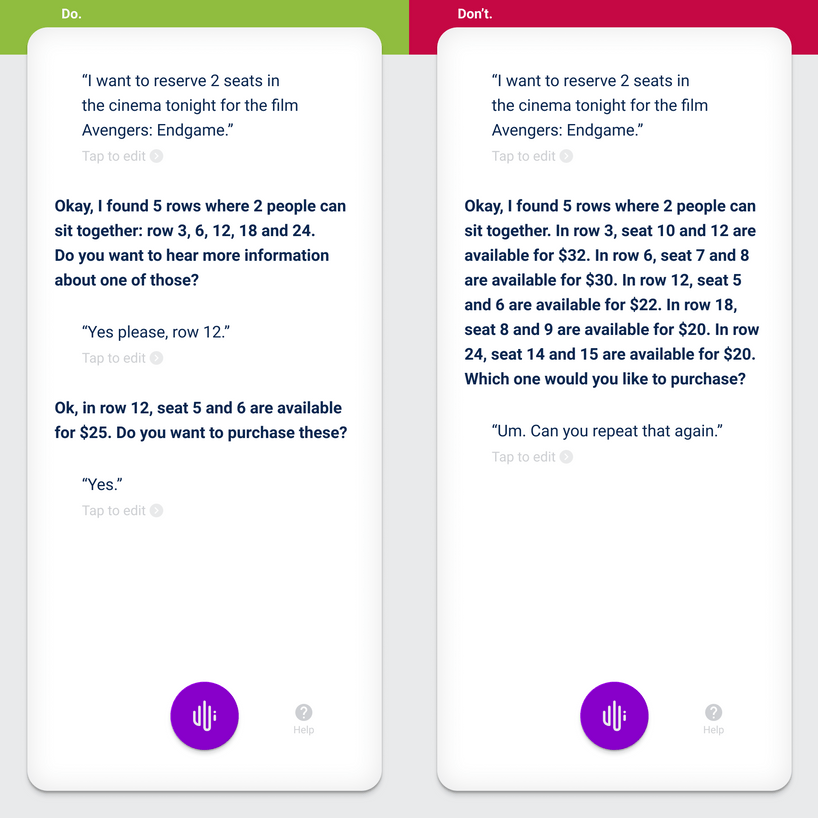Behaviour of speak

Talking to a computer shouldn’t be weird, but many users feel uncomfortable talking to a technical device, especially in a public environment, which can becomes an barrier quickly and leads to the voice user interface not being used.
Creating an optimal experience with a voice user interface can be difficult, especially if the user has to learn new things. Known communication patterns that have formed during years of humanity help to understand things and should not be broken.
Voice user interfaces should adapt to the existing communication behaviour and not reinvent it.
It has been proven that users feel more comfortable when they can communicate with a voice interface in a familiar way, as they would when speaking to a person in person.
Do what humans already do
Speak the language of the user. Using simpler language and no technical jargon has the greatest appeal and is accessible to people with different backgrounds. The goal of an voice user interface should be to choose the most understandable form for the communication with a user.
The clearness of the texts is particularly impressive with using simple language. Texts must be short, lines are clearly separated from each other. Each sentence contains only one statement.
It is not only the interaction with voice that is crucial, but also the short attention span of the user. It is hardly possible to capture a huge barrage of words in short timespan.
We may not be able to fully resolve the dilemma. You can only reduce complexity to a certain extent without shortening the content too much. However, we can still do a lot to write and design our texts in a more understandable way. We can be inspired by the simple language. It’s not about writing fewer or more texts, it’s about offering information as best as possible.

Go with the flow
Voice interactions should be fluid and dynamic. When we talk personally, we usually use a variety of facial expressions, sound, body language and movement changes. The challenge is to capture this fluid interaction in a digitized environment.
If possible, the entire voice interaction experience should feel like a rewarding interaction. Of course, more fleeting interactions like “play some blues” don’t necessarily require a full relationship. Any more severe interaction, such as ordering shoes with a voice user interface, requires a longer conversation.